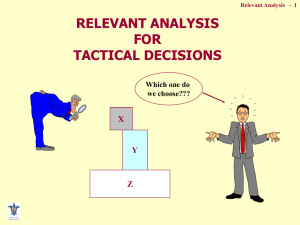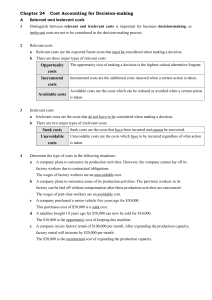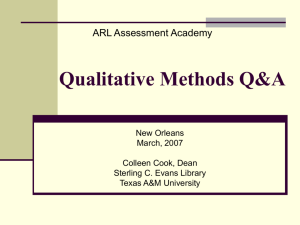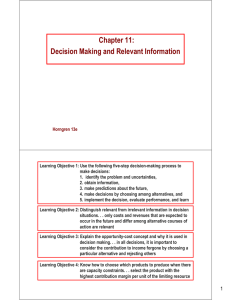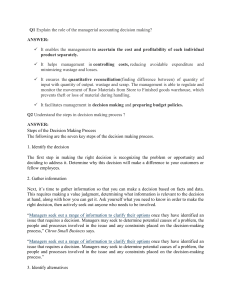CHAPTER NINE Decision Making With Relevant Costs and a
advertisement
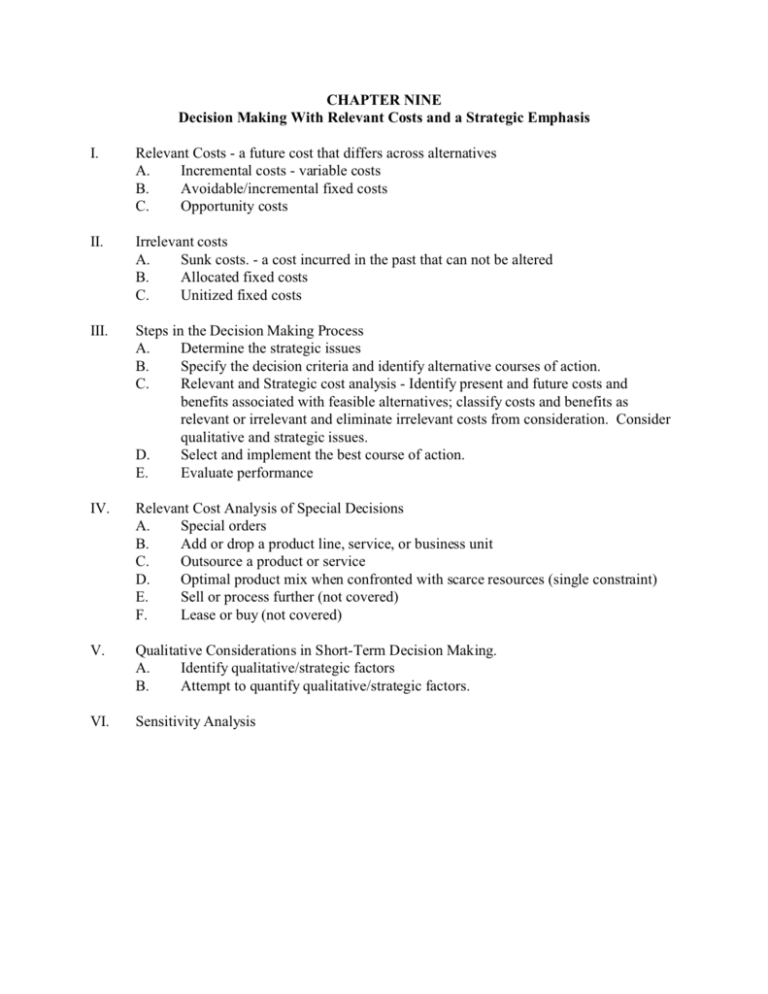
CHAPTER NINE Decision Making With Relevant Costs and a Strategic Emphasis I. Relevant Costs - a future cost that differs across alternatives A. Incremental costs - variable costs B. Avoidable/incremental fixed costs C. Opportunity costs II. Irrelevant costs A. Sunk costs. - a cost incurred in the past that can not be altered B. Allocated fixed costs C. Unitized fixed costs III. Steps in the Decision Making Process A. Determine the strategic issues B. Specify the decision criteria and identify alternative courses of action. C. Relevant and Strategic cost analysis - Identify present and future costs and benefits associated with feasible alternatives; classify costs and benefits as relevant or irrelevant and eliminate irrelevant costs from consideration. Consider qualitative and strategic issues. D. Select and implement the best course of action. E. Evaluate performance IV. Relevant Cost Analysis of Special Decisions A. Special orders B. Add or drop a product line, service, or business unit C. Outsource a product or service D. Optimal product mix when confronted with scarce resources (single constraint) E. Sell or process further (not covered) F. Lease or buy (not covered) V. Qualitative Considerations in Short-Term Decision Making. A. Identify qualitative/strategic factors B. Attempt to quantify qualitative/strategic factors. VI. Sensitivity Analysis
